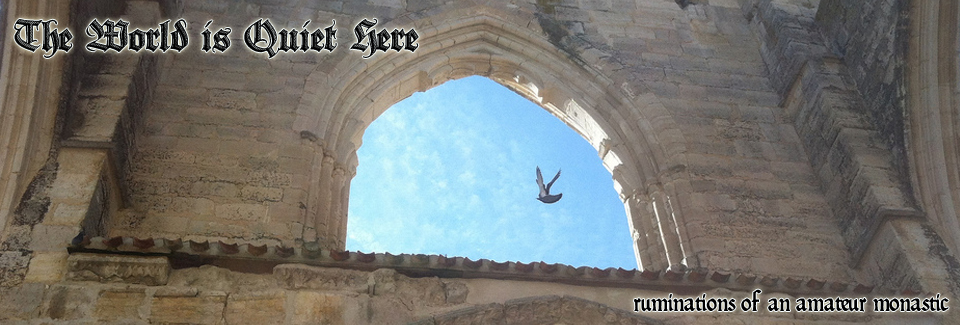Tales of a Catechist
We Catholics have done a spectacularly poor job of teaching the faith over the last forty years.
 Part of the problem, of course, is media narratives – such as the one that paints one of the most profound teachers of the past century
Part of the problem, of course, is media narratives – such as the one that paints one of the most profound teachers of the past century as an “inquisitor” or worse.
I’m gratified that Pope Francis has managed to change the narrative. I continue to be amused that he’s saying exactly the same thing as his two predecessors, but the mainstream media is touting it as new and revolutionary.
But these things are all on the grand strategic level. I’m operating more on the tactical level.
I’m part of the RCIA team at my parish.
For those of you not familiar with OCA (obscure Catholic acronyms), RCIA stands for “Rite of Christian Initiation for Adults“. It’s basically a year-long process of classes and rites for welcoming adults into the faith.
These are folks who are converting to the Catholic faith. In most cases, they receive the Sacrament of Confirmation at the Easter Vigil. Some of them are both baptized and confirmed.
In our parish, we also invite other parishioners to attend as a sort of continuing education programme. Last year, we started with two students, and by the end were down to one.
This year, we have considerably more. There were probably ten at my talk last night.
![]() These classes are supposed to get them up to speed on everything Catholic – history, symbols, customs, not to mention Sacraments, theology, and prayer. What in the old days we called catechetics.
These classes are supposed to get them up to speed on everything Catholic – history, symbols, customs, not to mention Sacraments, theology, and prayer. What in the old days we called catechetics.
It’s kind of an impossible task, as there are no formal guidelines for exactly what to teach or how this is supposed to be taught.
There’s the Catechism of the Catholic Church of course, which the Church calls “a sure norm for teaching the faith”. It’s fantastic, but it’s a reference book – more of an encyclopedia than a textbook.
So each parish, at least in our diocese, fends for itself.
RCIA is a pretty mixed bag. The quality of your education depends entirely on where you get it.
My RCIA experience during my conversion was big on feel-good fluff and very light on teaching anything that I was actually interested in – dogma, doctrine, discipline.
By way of contrast, our program at Holy Rosary is much more focused on teaching. The program is orthodox without being overwhelming. Hopefully.
This is my second year with the team. Last year I taught a class on the liturgical calendar, which was a lot of fun (props! slides! yowza!)
This year, several of our team members have bowed out due to illness or fatigue or other factors, I’ve got a fair number of classes to teach.
Last night, I taught “History of the Catholic Church”.
When I was asked to teach this particular class, I confess I hesitated. How do you get across 2,000 years in two hours? My immediate thought was a sort of bouncy Gilbert & Sulivan operetta filtered through the Animaniacs.
Sadly, I don’t have the talent to pull off something like that.
So I poked around to see if the US Catholic Bishops had put together anything. To my delight, I found a syllabus developed by the USCCB for teaching this very class. My delight faded pretty quickly when I realized that they anticipated that “The History of the Catholic Church” would require twenty sessions over two semesters.
Instead, I put together a PowerPoint presentation and hopped around like a loon.
I started out with a discussion from the Catechism and Bible on what exactly “Church” meant, and then started the history proper with Pentecost.
At the halfway break, I’d gotten as far as the fall of the Roman Empire.
To fit in the time allotted, I had to skip or gloss over huge chunks of things that really oughtn’t to be skipped or glossed over: the Roman Jewish war; the early missions to England, Ireland, Germany, Russia, and the Balkans; Becket; Joan of Arc; Lepanto; the Spanish Inquisition; the good Renaissance Popes; the English Reformation.
Even so, I only got as far as the French Revolution. I explained that everything since then was “current events”. It did allow me to end on the great story of Cardinal Consalvi.
Consalvi was Papal Secretary of State, and in charge of the Church’s government in exile after Napoleon had annexed the Papal States and abducted Pope Pius VII.
During his negotiations with the French, a French diplomat (or possibly Napoleon himself – accounts vary) boasted that they would destroy the Church.
Cardinal Consalvi laughed. “We haven’t managed it after eighteen hundred years – what makes you think you can do it?”

